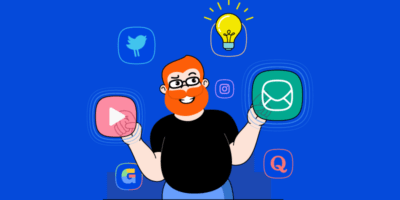Here’s a list of 17 marketing tips that you can implement right away.
Someone on LinkedIn offers you 64 ChatGPT prompts to improve your content marketing. You download the PDF and tell your marketing team members they need to get on those now.
You then hop on Twitter and see someone share the MrBeast formula for YouTube. You don’t even have a YouTube channel, but you’re convinced—you need a YouTube strategy right now.
But here’s the thing: Chasing every new tactic that falls on your lap is derailing your marketing.
Avoid shiny object syndrome and focus only on tactics that advance you toward your #1 marketing objective. Be honest with yourself. If you don’t see how they help, don’t do them. You can always save them for next time.
The success of Mark Zuckerberg can be attributed to his hyperfocus:
If you find that your marketing is dispersed in all directions and getting no results, chances are you’re trying to chase too many marketing goals at once.
Simplify your focus. Commit to one marketing goal. And make sure it’s SMART too:
- Specific – Clearly state the desirable outcome and explain who, what, when, how much, etc.
- Measurable – Track progress with key performance indicators (KPIs).
- Achievable – Set bold goals, but also be realistic; use the current growth as a benchmark.
- Relevant – Does the objective align with your overall marketing and business strategy?
- Timely – Set up a time frame for achieving the goal.
You’re likely not the only business selling your product or service. So why should anyone choose you over the rest?
If you don’t tell them why, they won’t.
That’s why your positioning should make it crystal clear to potential customers what your product or service is, why it’s different, and why it matters to them.
How do you create your positioning statement? The best way is to follow April Dunford’s “Obviously Awesome” framework. I highly recommend buying the book, but here’s a quick summary:
- Understand who your best customers are
- Form a positioning team and align your positioning vocabulary across teams/departments
- List your competitive alternatives
- Figure out the attributes and features that make your product/service unique
- Figure out the true value of these attributes and features—what do they do for your customers?
- Find a target market that makes your value obvious to the customer segments that care most about your unique value proposition
- Capture your positioning in an evergreen document that can be shared across all teams
You may have a significant following on social media, but:
- Your reach can be throttled anytime.
- Your account can be suspended for no reason.
- Your country could ban the platform altogether.
When it comes to developing an audience, there’s no better way than to build an email list. It may be a relic on the internet timeline, but it’s reliable—with an email list, you own the contact details and can communicate with your audience anytime.
To build an email list, you must convince website visitors to subscribe. Most websites offer something in return for subscribing—a free ebook, a course and, sometimes, a discount.

At Ahrefs, we have a simple opt-in form on our blog:

The moment your audience signs up for your email list, they’ll likely receive a welcome email. For example, this is what our email looks like:

Your welcome email sequence can be one or more emails. But how do you know what kind of emails you should send?
It all depends on your guiding narrative. This is the high-level message you think will resonate with your audience. Basically:
What do you want your audience to take away from your email sequence?
For example, if you sell Italian food in London, your narrative could be:
- The recipes you use in your restaurant are passed down from your great-grandfather’s generation.
- All the ingredients are shipped fresh from Italy.
- Your restaurant has one Michelin star.
For us at Ahrefs, we decided that:
- We want to showcase our content since it is both educational and product-led.
- All we need is one email to share our best blog posts.
That’s how we came up with our welcome email.
Here’s an article listing the best cafes in London:

If we plug this page into Ahrefs’ Site Explorer, we see that it gets an estimated 3,800 visits from search engines each month:

If there are any relevant lists like this for your business, you’ll want to be on them. You can find relevant lists with traffic using Ahrefs’ Content Explorer:
- Enter a relevant search (i.e., “best [business type] [local area]”)
- Select In title from the dropdown
- Run the search
- Set the Live & broken filter to Only live
- Add a Page traffic filter and set the minimum to 100
- Check Exclude homepages

Giveaways are a great way to simultaneously build brand awareness and your email list. But many marketers make the mistake of giving away things utterly unrelated to what they do, like an iPhone or iPad.
They then wonder why none of the people they attract turn into paying customers.
For sweepstakes to work, you must give away something that attracts potential customers. Your product is the most obvious choice, but don’t limit yourself to that.
For example, when I worked for a burgeoning startup years ago, I partnered with another company to give away its product. We then shared the email list between us.
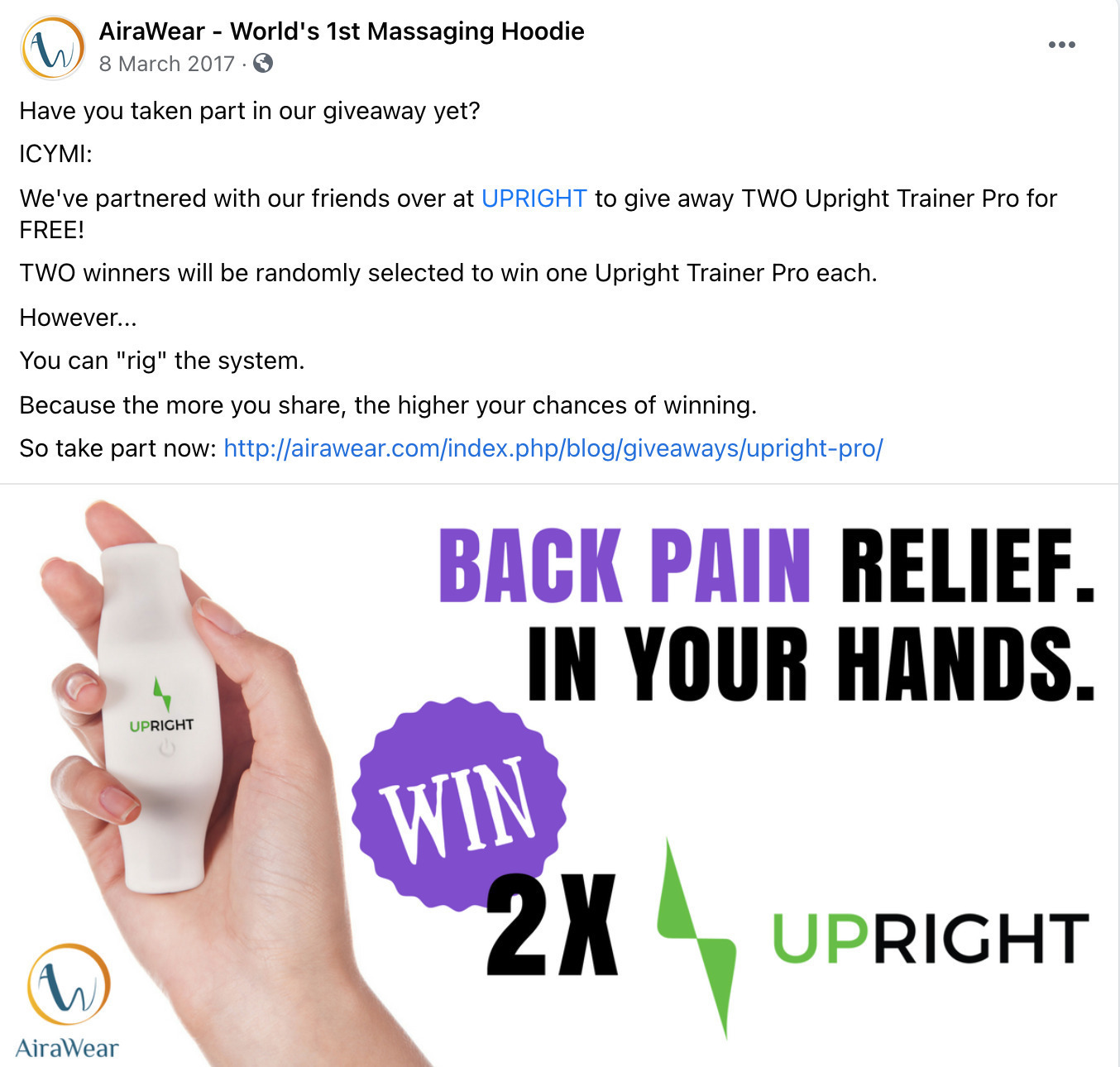
At Ahrefs, we regularly give away our swag.
Look at how happy they are:
The first step is to create or claim your Google Business Profile (GBP). But that’s not enough. You’d want to optimize it so that you’ll appear on Google when searchers are looking for businesses that offer things or services they need.
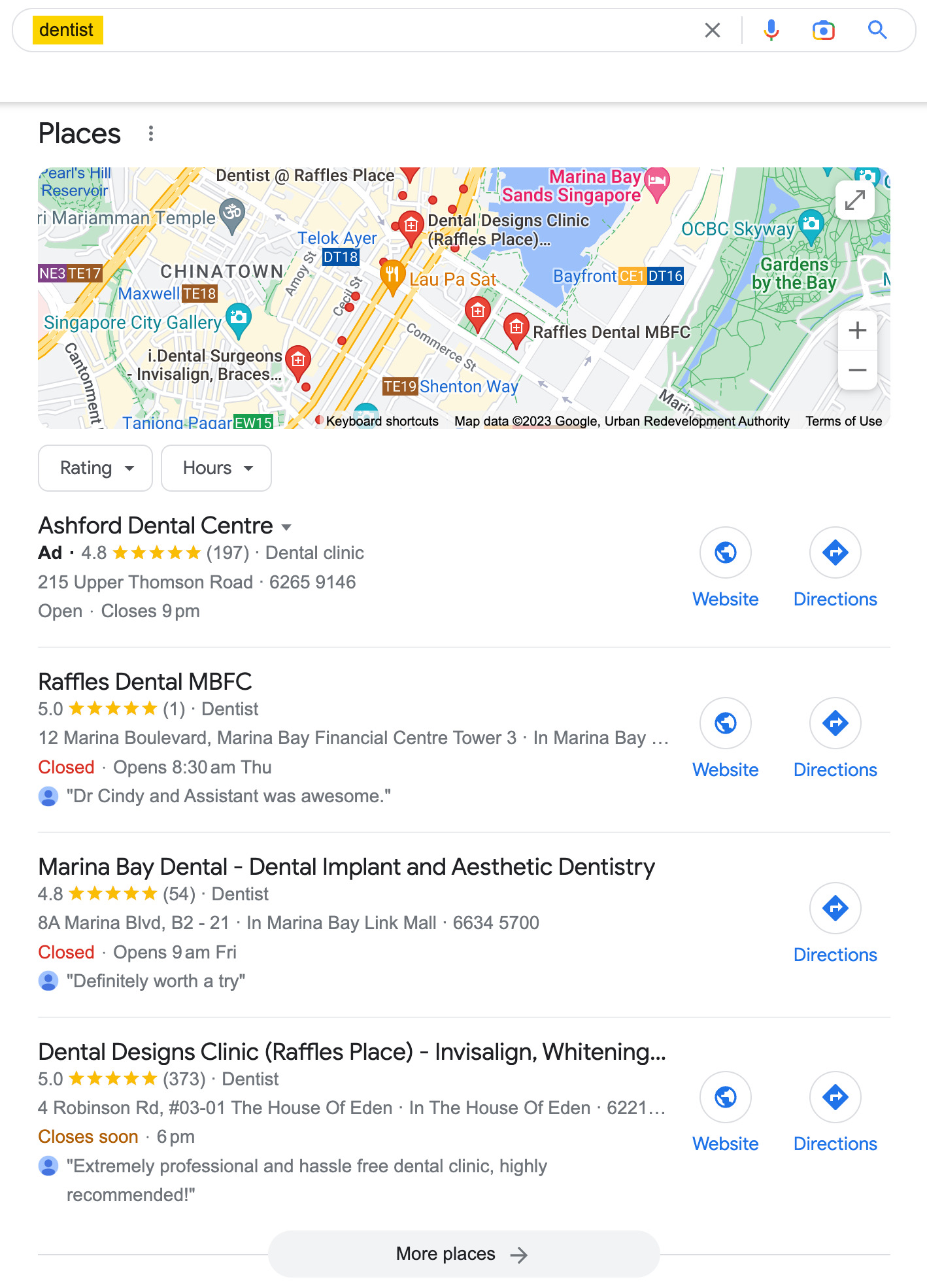
Here’s how to optimize your GBP:
- Business categories – You can help Google understand your business better by selecting up to 10 business categories. It’s also a good idea to keep abreast of the new categories that Google adds so you can update your GBP accordingly.
- Attributes – These can be thought of as labels or tags that convey additional information about the business. Some are objective (e.g., “black-owned [business]”) and thus can be controlled by you. Others are subjective and are earned when a certain feature of your business is often suggested by the customers.
- Reviews – This is beyond GBP itself, but you’d want to provide a great experience for your customers so they’ll leave good reviews. You should also ask for it when you have the opportunity—usually when the customer expresses their satisfaction, whether they say it personally or online.
Did you know that 90.63% of pages get zero traffic from Google?

It is likely because they’re not targeting topics that people are searching for.
It makes sense: If nobody searches for what you’re writing about, you won’t get search traffic. So if you want passive, consistent traffic coming to your site, you’ll have to target topics with search traffic potential.
How do you find these topics?
- Go to Ahrefs’ Keywords Explorer
- Enter one or a few relevant terms
- Go to the Matching terms report

You’ll see over 4 million potential keywords to target. You can narrow the list by focusing on low-competition topics with traffic potential.
Just add these filters:
- Traffic Potential to >500
- Keyword Difficulty to <20

Go through the results and pick out relevant ones for your site.
Generally speaking, the more high-quality links you have, the higher your page will rank.
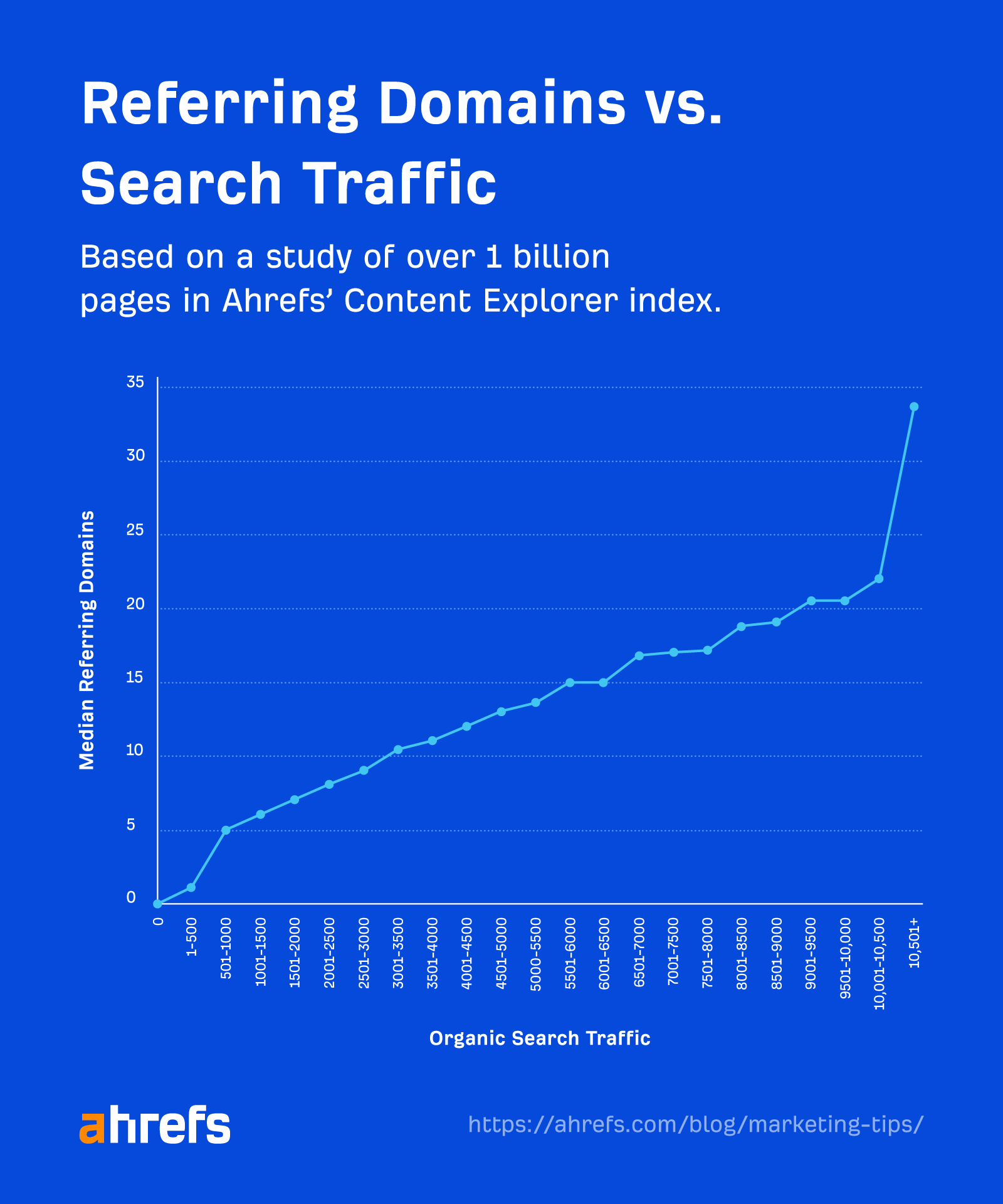
So if you spot a page that doesn’t have many backlinks but still ranks high on Google, it means you can potentially outrank it. Here’s how we can find these opportunities:
- Go to Ahrefs’ Content Explorer
- Enter a relevant keyword
- Set a Referring domains filter to max. 10
- Set a Page traffic filter to min. 500
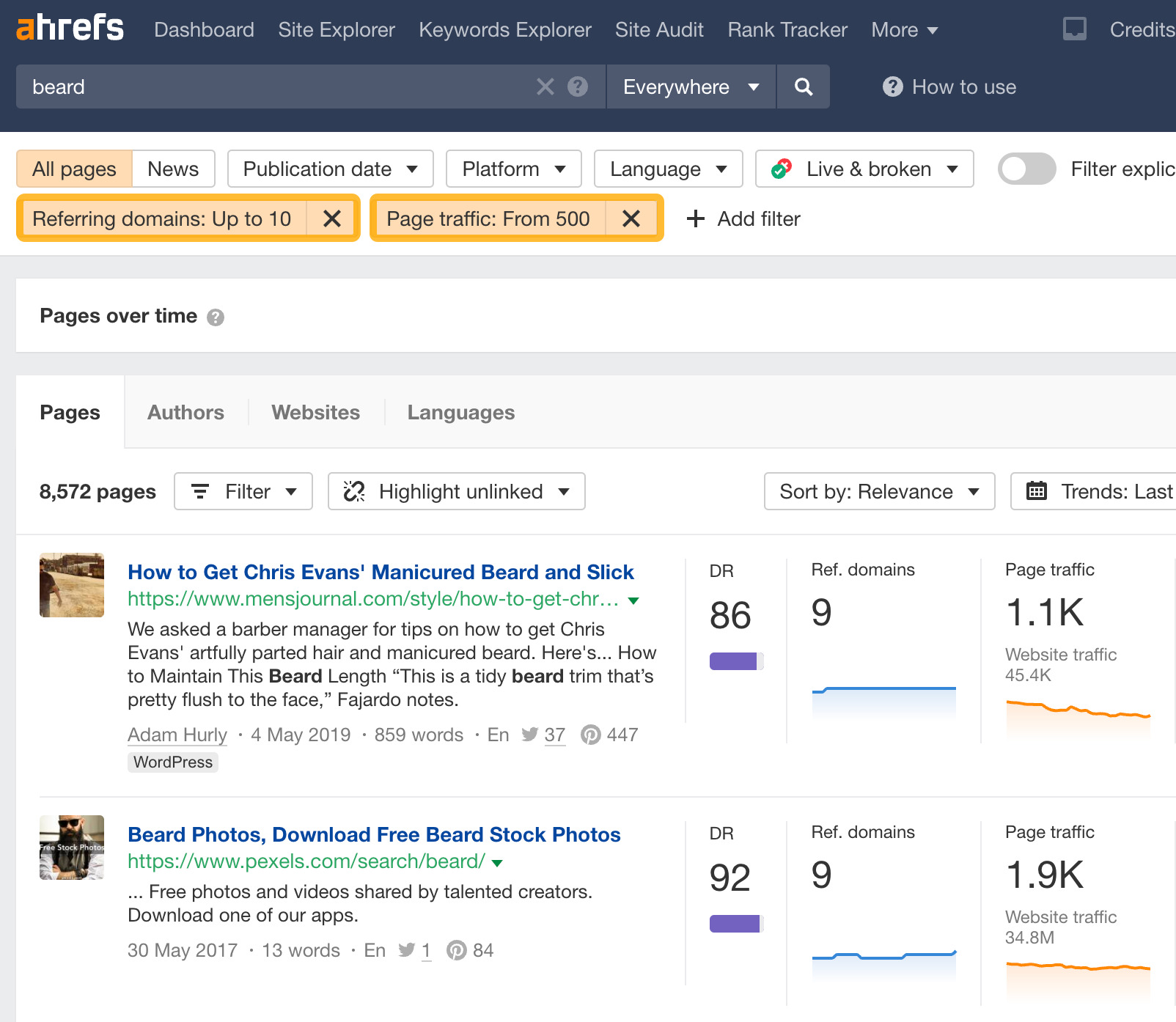
Click Details and then the Organic keywords tab to see which topics those pages are ranking for.

They could be potential keywords to target too.
When it comes to paid advertising, everyone’s go-tos are Facebook, Instagram, and Google Ads. But don’t forget that other social platforms like Twitter, Quora, and TikTok have advertising too.
Especially Quora.
Even though it’s overshadowed by other platforms, it still boasts 300 million monthly visitors for now. And we’ve seen great results from Quora ads.
Not only is it generally cheaper than other PPC platforms, but it also has great targeting options:

How can you get the best out of this platform? I’ll leave the explanation to my colleague, Michal Pecánek, who has been running our ads on Quora. Check out his guide:
There are 3 million active podcasts. Many of them are interview-based and are constantly looking for new guests.
Why not pitch yourself to them? You’ll get exposure to a new audience and a link back to your site.
Here’s how to find podcasts:
- Identify a prolific podcast guest in your industry
- Plug their website’s homepage into Ahrefs’ Site Explorer
- Choose Exact URL
- Go to the Backlinks report
- Search for “episode” in the Referring page title

Go through the list and pick out podcasts you could appear on. Pitch yourself to them.
Make your content go the extra mile by turning it into Twitter threads. This can be as simple as pasting your articles into Typefully and editing them to fit Twitter’s requirements.
Here’s an example of how we did it:
But you’d want as many people as possible to see your thread. How do you do that? It’s a little meta, but learn how to craft a top 1% Twitter thread from this Twitter thread:
Created an amazing Twitter thread that generated tons of attention? Don’t stop there—push it even more by turning your thread into a LinkedIn carousel.
A carousel is a format that allows you to add multiple images and/or videos in a single post. Here’s an example of a Twitter thread turned into a carousel:
Note that this feature may not have been rolled out to everyone yet. But don’t worry. You can always create a PDF and upload it. Here’s an example of how we did it:
Sometimes, all it takes is to show up at events where your customers are hanging out. That way, you can meet them in person, build up a relationship, and they may eventually become your customers.
Especially if you’re a local business, tight-knit and small local meetups are great places to meet prospective customers. If you have the budget, you can even sponsor the event by providing light bites or drinks.
Even better: volunteer to speak at the event. It can help build brand awareness, boost your status as a thought leader, and, most importantly, get you customers.

No niche events in your local area? Then step up and take the responsibility to run one.
We did this a few months ago, and it went really well.

Don’t look down on small events—it’s usually the seed of bigger things in the future. As you can see, only around 15 people turned up that day. But it has already generated interest both online and via word of mouth. (And we’re ready to scale it up!)
Many people think social media is about posting as much as possible. But nothing can be further from the truth.
After all, if you don’t have an existing audience, you’re publishing to crickets. So to kickstart your social media growth, you have to practice good reply game.
How do you do that? I asked marketing consultant David Fallarme, and here’s what he said:
For most people going from zero to one on LinkedIn, the way to get engagement on your content is to give engagement to other content first.
Your first job: to find and add people who are relevant to you and your target audience. Add a few influencers in your niche, then use the “People also viewed” function to see who else LinkedIn suggests. These are typically people who post regularly, which means you’ll be exposed to a lot of content in your niche.
After following ~10–15 influencers, you should build your LinkedIn writing muscle by commenting on their posts whenever you log on. This does a couple of things: First, it trains your brain that posting on LinkedIn is nothing to be scared of. Two, it gives you new ideas for your own content—every comment you leave is the seed for future posts. Third, when you leave thoughtful comments, and when you reply to others who have left comments, others who also follow that person will visit your profile and respond to your connection requests.
All of these increase the chances that when you post something on LinkedIn, it’s relevant to your target audience and you’re not just yelling into the void. You always have new connections who are exposed to your content.
However, don’t comment for the sake of commenting. The worst thing you can do is become a “reply guy.” You’d want to genuinely participate in the conversation. Add on to their post, give them something new to think about, or challenge their opinion in a friendly way.
That’s how you become memorable within the comment section.
Final thoughts
Now you know my top actionable marketing tips, the next step is to apply them to your own business.
If you get any results using these tips, let me know on Twitter.

